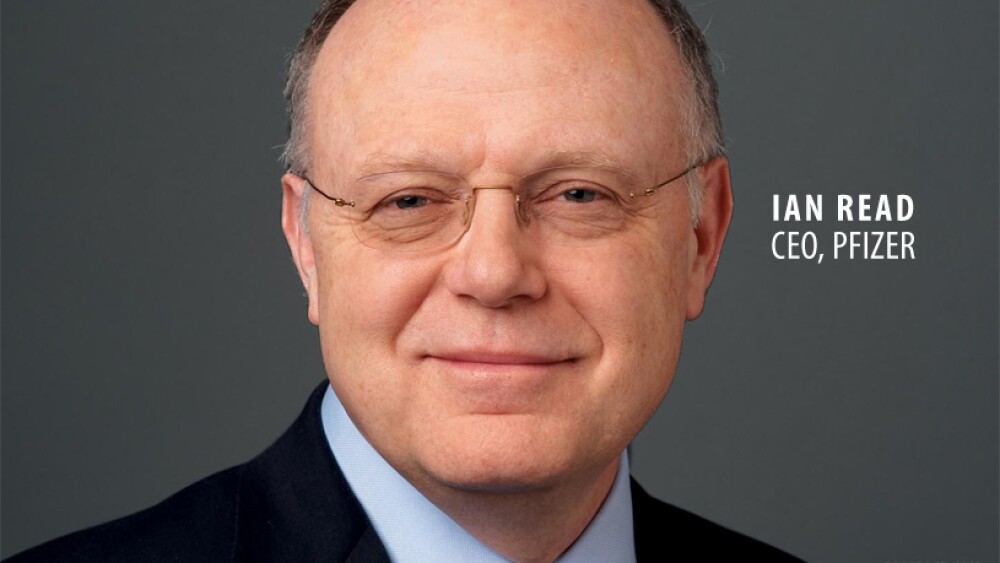October 13, 2016
By Mark Terry, BioSpace.com Breaking News Staff
Pfizer has been on a downward trend since August 1, when shares traded for $37.31. They are currently trading for $33.07.
This trend has some analysts concerned that the company’s apparent strategy to avoid another mega-merger and focus on smaller acquisitions won’t solve Pfizer’s downturn. Others, however, looking at more technical data, suggest it might be ready to break out.
Since the Allergan merger fell through, Pfizer has bought Anacor , Medivation , and the infectious disease compounds from AstraZeneca . It also signed and option and license deal with Rockville, Maryland-based OncoImmune for ONC-392 on September 15, a differentiated preclinical anti-CTLA4 monoclonal antibody.
Ed Wijaranakula, writing for Seeking Alpha, points out that after its failed merger attempts with AstraZeneca and Allergan, it needs to rely on its current blockbuster drugs, which have pending patent cliff issues, which will lead to significant competition from generics and biosimilars. So he believes that merger-and-acquisition deals are “still highly critical to Pfizer, either by more small acquisitions or a mega-merger, in order to get its revenues back on a growth path.”
After getting burned twice by the U.S. Treasury Department specifically writing rules to block Pfizer tax inversion deals, the company’s chief executive officer, Ian Read, has suggested he no longer has the stomach for big deals that will get shot down by the federal government. Which does suggest that Wijaranakula’s suggestion that a mega-merger with Bristol-Myers Squibb would be a good thing is unlikely to happen.
TheStreet, on the other hand, provided a fairly technical breakdown on the possibility that Pfizer’s stock downtrend might be ending soon. “Back on August 1, Pfizer had stretched its powerful rally off the May low to just over 15 percent. This impressive rally leg received a powerful spark on May 3 from its first-quarter earnings report.”
The second leg of the rally apparently came right after the Brexit panic had settled down. “Just one day ahead of its latest earning report, Pfizer appeared to be breaking out from a two-and-a-half week consolidation. The nasty breakdown that followed on August 2 left behind an ominous spike high, one that would lead to a complete retracement of the May rally.”
The News Is Money wrote that yesterday about 15.14 million shares were traded, down from its average daily volume of 18.36 shares. And although it doesn’t explicitly make the connection, it suggests that a recent clinical trial by Exelixis in which its Cabometyx (cabozantinib) showed significant advantages over Pfizer’s Sutent (sunitinib) for previously untreated advanced renal cell carcinoma (RCC), might have an impact. And it might, because up to this point, Sutent is the first-line treatment for RCC, but Cabometyx appears to be significantly better and Exelixis is submitting a Supplemental New Drug Application (sNDA) to the U.S. Food and Drug Administration (FDA) to treat first-line advanced RCC.
New Is Money writes, “Pfizer Inc. have shown a high EPS growth of 1.60 percent in the last five years and has earnings growth of -58.80 percent YOY. Analysts have a mean recommendation of 2.20 on this stock (A rating of less than 2 means buy, ‘hold’ within the 3 range, ‘sell’ within the 4 range, and ‘strong sell’ within the 5 range). The stock appeared -10.82 percent below its 52-week highs and is down -2.33 percent for the last five trades.”
TheStreet, however, writes, “If Pfizer can regain its footing in this area, a solid bottom could begin to form. Once shares stabilize this support zone should be considered a very low-risk buying opportunity. On the downside, a close back below $32 would indicate a more prolonged basing process is ahead.”





